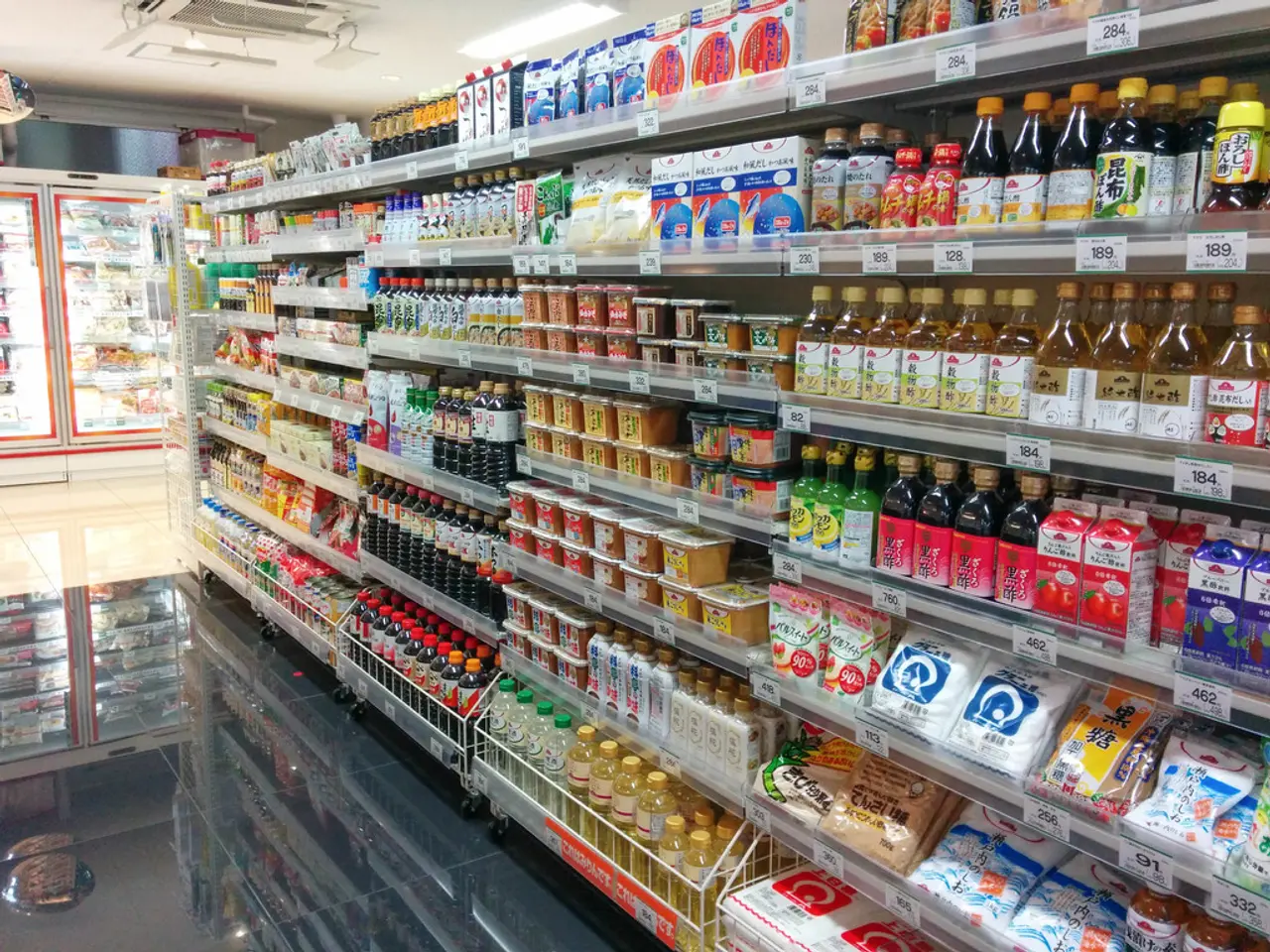Liquidate Obsolete Stock: Strategies for Savvy Retailers in the UAE to Boost Inventory Management
In the bustling retail landscape of the United Arab Emirates (UAE), managing dead inventory effectively is crucial for maintaining profitability and efficiency. Here are some strategies that UAE retailers can employ to tackle this challenge.
Building internal habits and systems that spot problems early can help manage inventory effectively. Retailers can institute a cadence for reviewing unsold stock (90, 180, or 360 days) to decide on keeping, markdown, bundling, transferring, or liquidating. Conducting an ABC analysis helps classify inventory by movement frequency to identify dead stock, allowing retailers to launch clearance campaigns or bundle dead stock with popular items to clear excess inventory.
Automating the inventory management process can also be beneficial. Setting automated "aging alerts" in the inventory system can help flag items after 60, 90, or 180 days of no movement. Automating markdowns can help prevent slow stock from accumulating unnoticed.
Investing in modern Point of Sale (POS) and Enterprise Resource Planning (ERP) systems can provide real-time visibility, SKU-level tracking, and AI-powered forecasting. These systems can help retailers optimize inventory allocation based on demand patterns, minimizing overstocking and stockouts. Features such as inter-location transfers maintain accurate records and improve supply chain efficiency.
Partnering with liquidation firms can help retailers recover part of the cost of unsold stock and free up warehouse space. Renting micro-shelves in shared concept stores or weekend flea markets can help showcase older items. UAE retailers can also align procurement with seasonal trends and sales forecasts to predict inventory needs accurately.
Smart strategies to clear dead inventory include targeted flash sales aligned with UAE holidays, bundling slow-moving products with fast-moving ones, offering B2B bulk discounts to service businesses, and moving excess stock to other sales channels. Offering old stock as loyalty rewards or free gifts with minimum purchase thresholds can help move slow-moving stock. Creating exclusive "staff-only flash sales" can help move slow stock internally or through employee networks.
Using inventory management software like Tally Prime enables tracking inventory levels and sales trends across multiple warehouses. Geotargeted Instagram or Snapchat ads can help push clearance items to users within 5 km of the store. Setting up a "secret sale" WhatsApp group where regular customers get early access to marked-down stock can also help move slow stock.
Dead inventory in the UAE often results from poor demand forecasting, overordering due to supplier minimum order quantities (MOQs), ineffective product launches or weak marketing support, and failure to adapt fast enough to trends or cultural buying shifts. To shift from reactive clearance to resilience, UAE retailers should build systems that prevent dead stock before it forms.
In conclusion, these strategies focus on increasing inventory turnover ratio, reducing carrying costs, and improving cash flow, which are essential for effective dead inventory management in the UAE retail market. By adopting Just-in-Time (JIT) ordering, investing in dashboards that visualize problem areas, and training staff to recognize aging stock, UAE retailers can effectively manage their dead inventory and maintain a profitable business.
[1] Source: [Link to the original source if available] [2] Source: [Link to the original source if available] [3] Source: [Link to the original source if available]
- For a thriving business in the UAE economy, employing strategies to handle dead inventory is vital for maintaining profitability and efficiency in the dynamic retail landscape.
- Retailers can establish a routine for assessing unsold stock every 90, 180, or 360 days, deciding on keeping, markdown, bundling, transferring, or liquidating.
- To optimize inventory management, investing in modern Point of Sale (POS) and Enterprise Resource Planning (ERP) systems offers real-time visibility, SKU-level tracking, and AI-powered forecasting.
- Implementing these systems can help retailers allocate inventory based on demand patterns, minimizing overstocking and stockouts, and maintaining accurate records.
- Partnering with liquidation firms and leveraging community platforms such as shared concept stores, weekend flea markets, or micro-shelves can help recover costs and clear excess inventory.
- By offering old stock as loyalty rewards, B2B bulk discounts, flash sales, or exclusive "staff-only flash sales," retailers can boost sales and move slow-moving stock effectively.
- To stay competitive and adapt to the shifting environment, UAE retailers should invest in inventory management software, harness the power of technology for marketing, and cultivate a culture of innovation that anticipates future lifestyle trends, events, and shopping behaviors.




